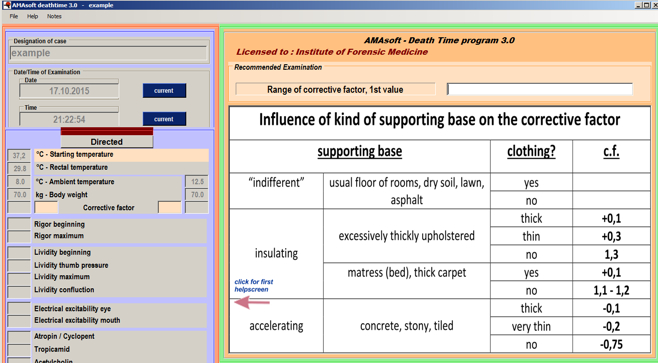



| The investigated dependence of corrective factors on the body weight in cases of low or high body weight and, at the same time, higher thermic insulation conditions are automatically taken into account by the program whenever the body weight and the corrective factor require that. |
 |
